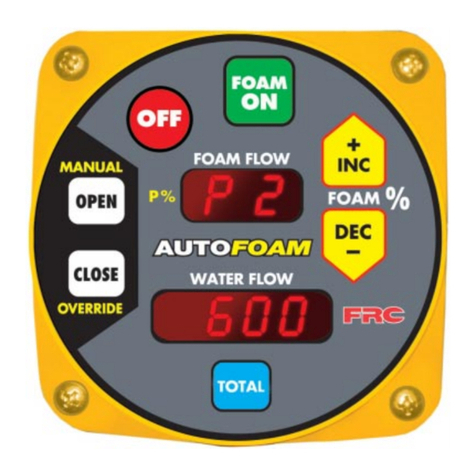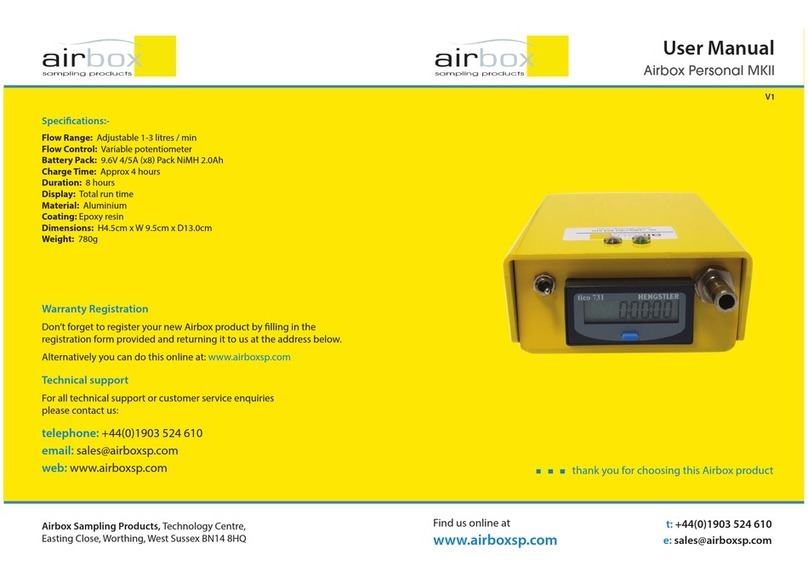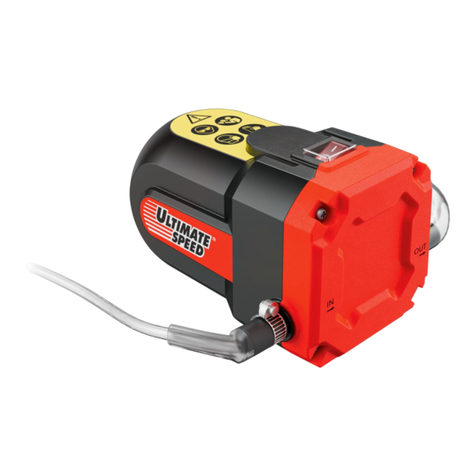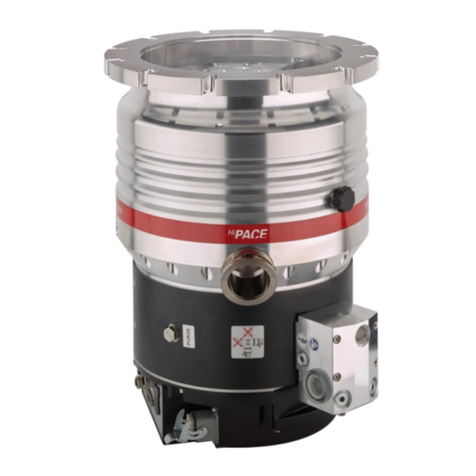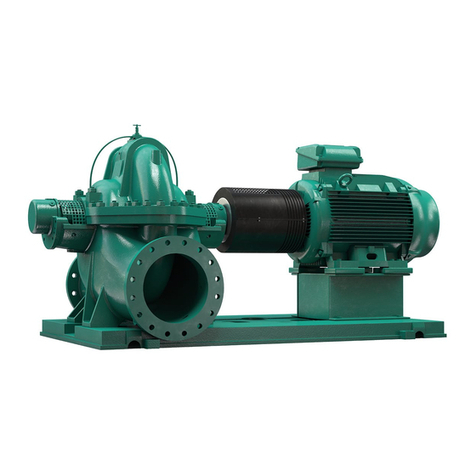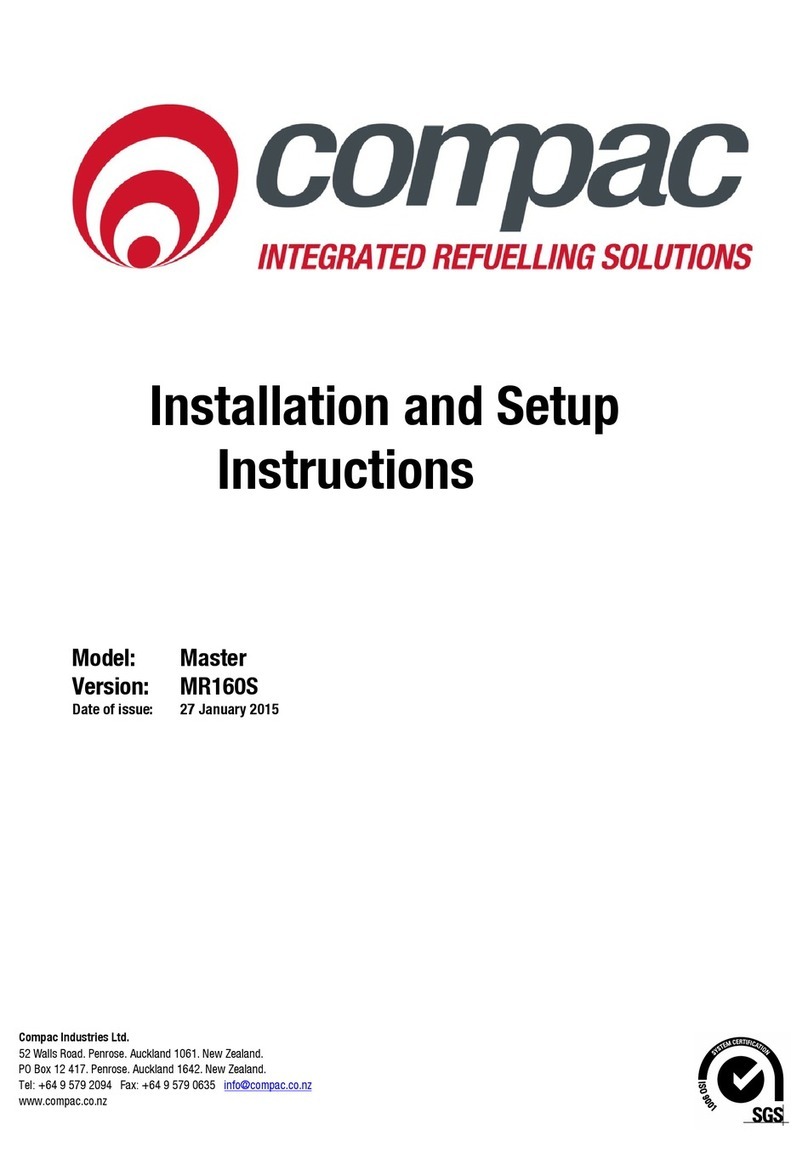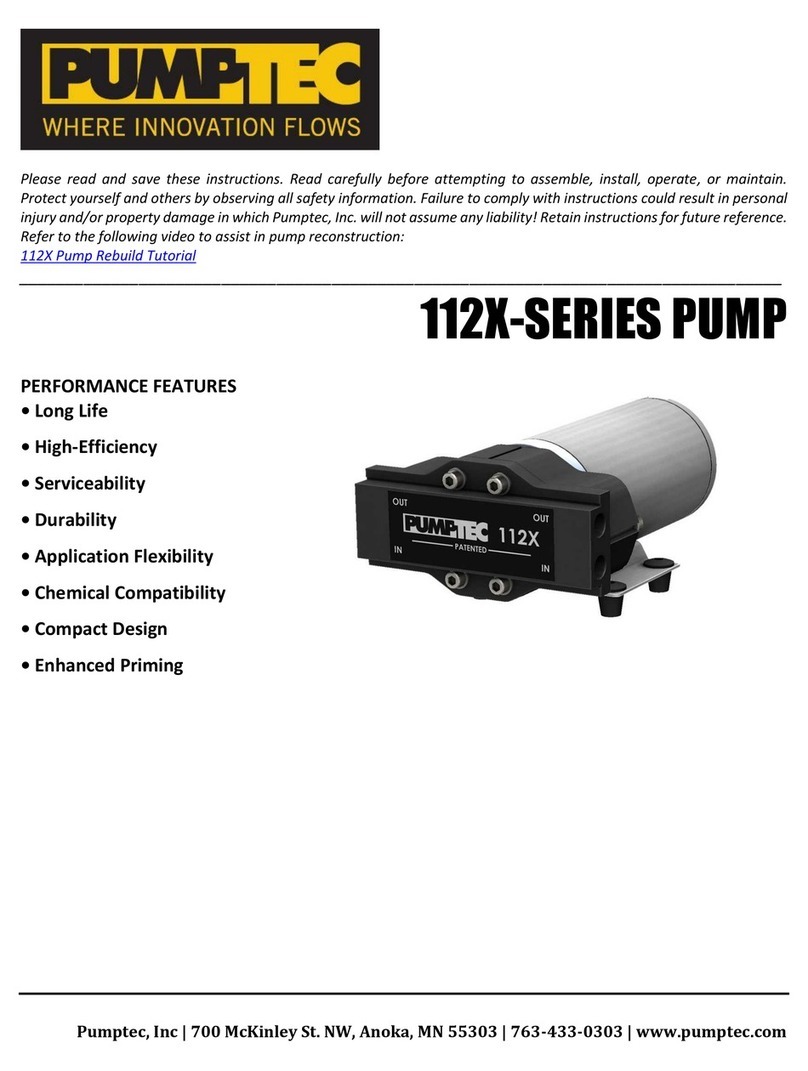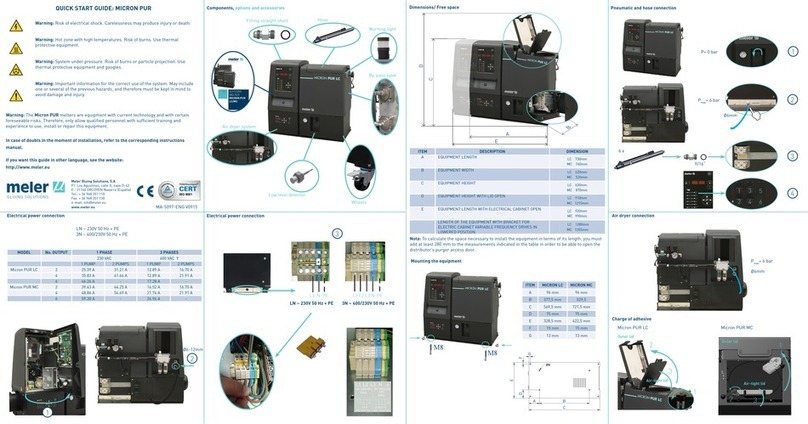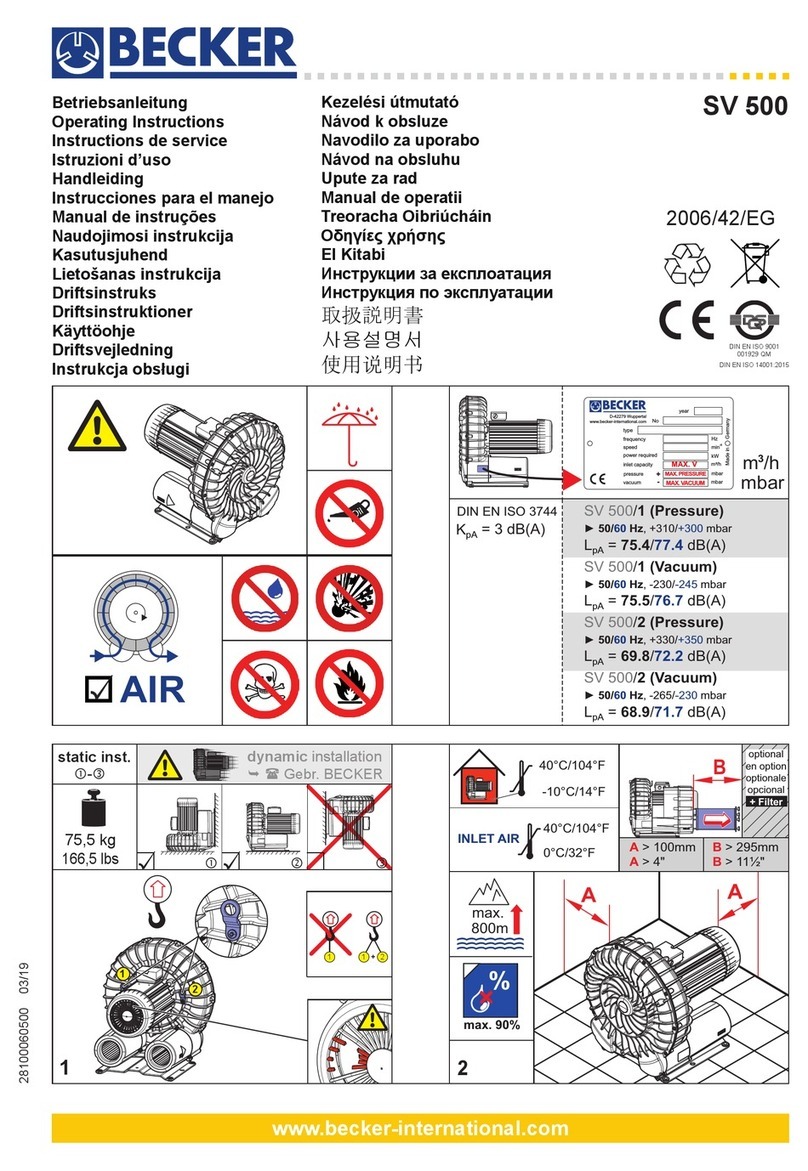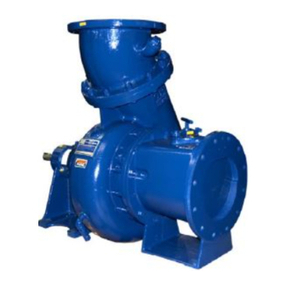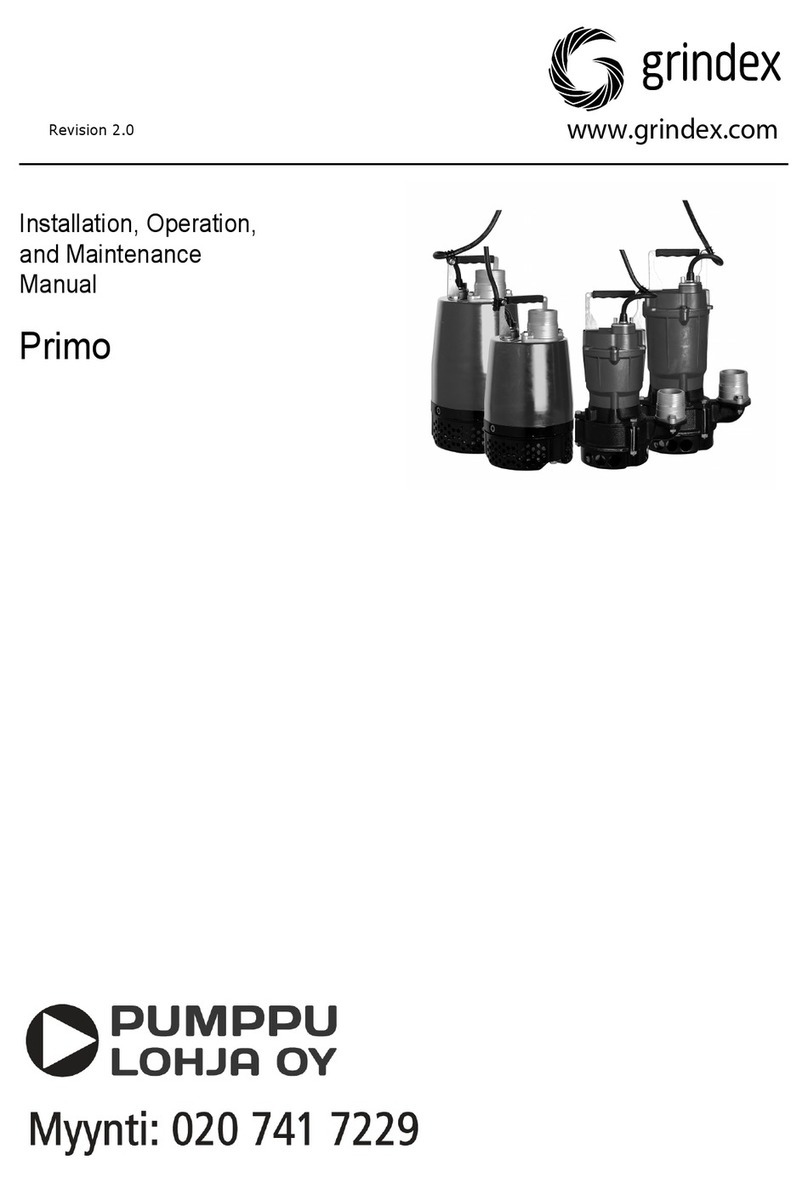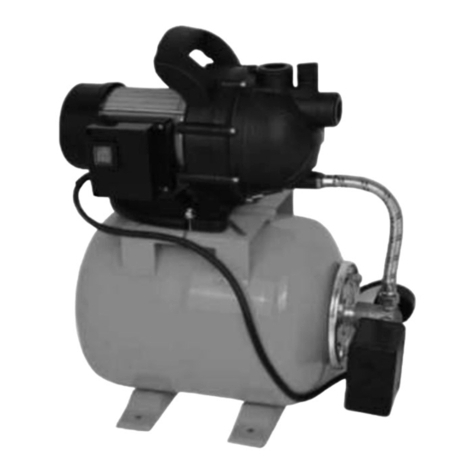
User’s Manual – AREBOS Deep Well Submersible Pump
9
•Avoid contact between the power supply and the pumped liquid.
3.6 Cable
•The cable should be suitable using in water and its size should endure the current of the
motor. The cable should be accorded with the local standards.
•If it is far in distance to the power supply, you should use a bigger diameter cable. The
insulation resistance of the motor stator winding should be over 5 megaohm.
•First you should hang up the pump and fix it firmly, then install a leakage protector at the end
of the power cable and make a grounding connection by the grounding wire that is with
double colour yellow and green or black to prevent electric shock (plug marked grounding).
•Fix the power supply cable to the delivery pipe so that it cannot be twisted. Allow for
expansion of the delivery pipe by leaving a little stack between the clamps.
•When carrying out connection make sure that there is an efficient earth circuit.
•The earth wire must be longer than the live wires, and must be the first wire to be connected
when the pump is being set up and the last to be disconnected during assembly.
3.7 Starting controller
•Each single phase three wires motor should equip a control box.
•Check that the data on the rating plate corresponds to the rated line values.
•The single-phase versions are supplied as standard with a control box which comprises
capacitor, two-phase switch and an amperometer overload cut-out with manual reset.
•Check the electrical equipment installations and the control box which should accord with all
of the safety rules and requirements of the motor where included the size of fuse or breaker
and over-load protector. All of the metal pipe and control box should be connected with the
earth wire of the power supply to prevent electric shock and they should conform to the
safety rule of law both of national and regional.
•If the overload cut-out trips, check the cause of the overload before restart again.
•Caution: It is the installer´s responsibility to perform the connections in compliance with
the regulation in force the country of installation.
3.8 Pump/Motor installation
•If the pump is not coupled with the motor, you should check the installation surface both of
the motor and the pump whether they are or are not polluted; the lacquer layer whether is
uniforming.
•Assemble the pump with the motor together and make fitting face contracted each other,
then uniformity tighten the screws, screw caps and so on, until they reached up to the
stipulation of manufacture.
•Joint the down-lead of the motor with the cable tie-in of the power supply by tin or press out
method. Pay attention to the insulation where you can use the water-proof adhesive tape or
contraction pipe accorded to the installation requirements both of the motor and the pump.
•Put the down-lead shield cover of the pump on the down-lead of the motor. When
assembling or installing the pump, please do not incise or extrude the down-lead.
•Inspect the pump shaft if you can touch it. The shaft should be rotating freely.
•Use the plastic and rubber pipe that - with enough attention - can fix the cable on the outlet
water pipe where you keep intervals of 3 meters (10 feet).
•Assemble all of the pipe joints as tight as possible to prevent loosens because of the torque
motor.
•The pump can be installed either using metal piping (which can be used to support the pump)
or flexible piping.
•In the case of flexible piping, the pump must be supported by a cable made of material which

















